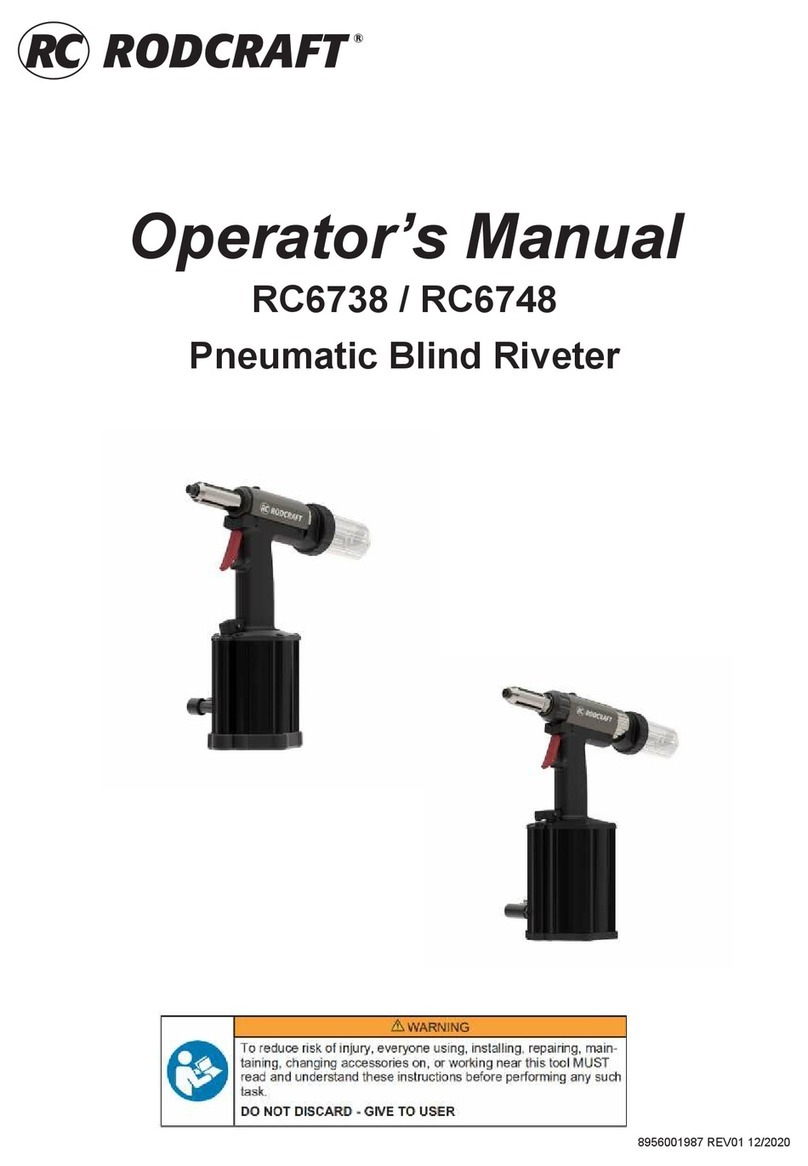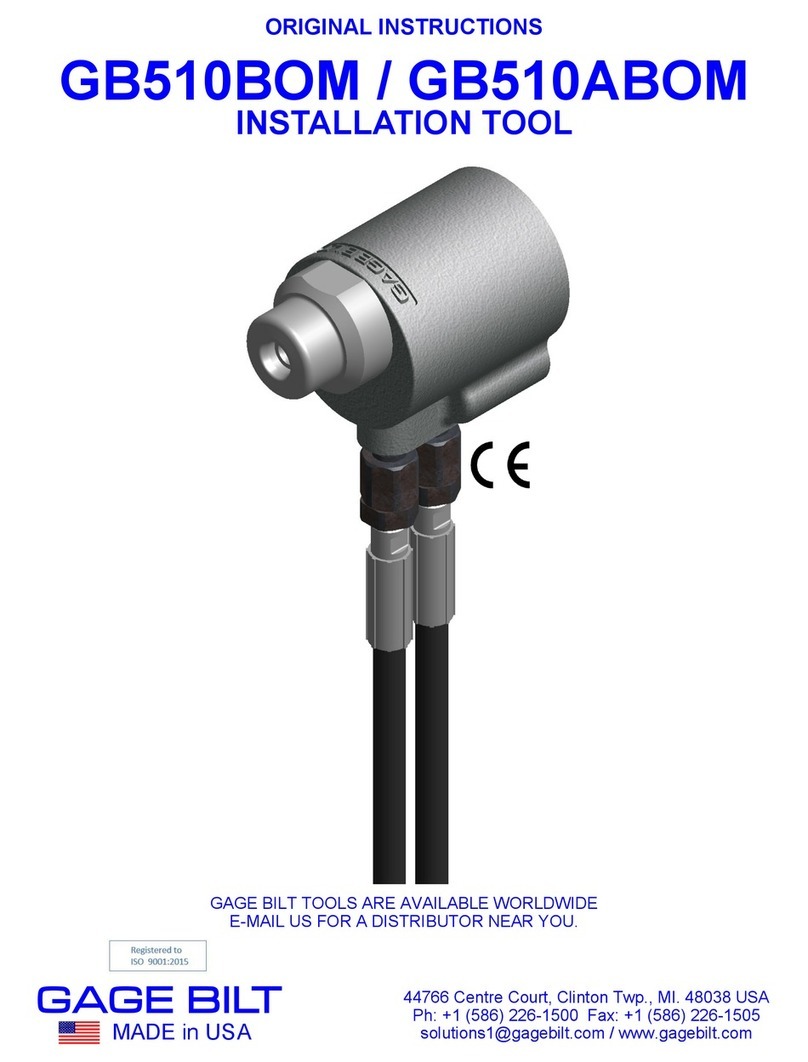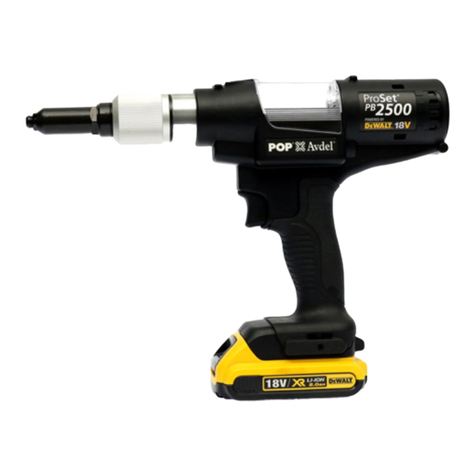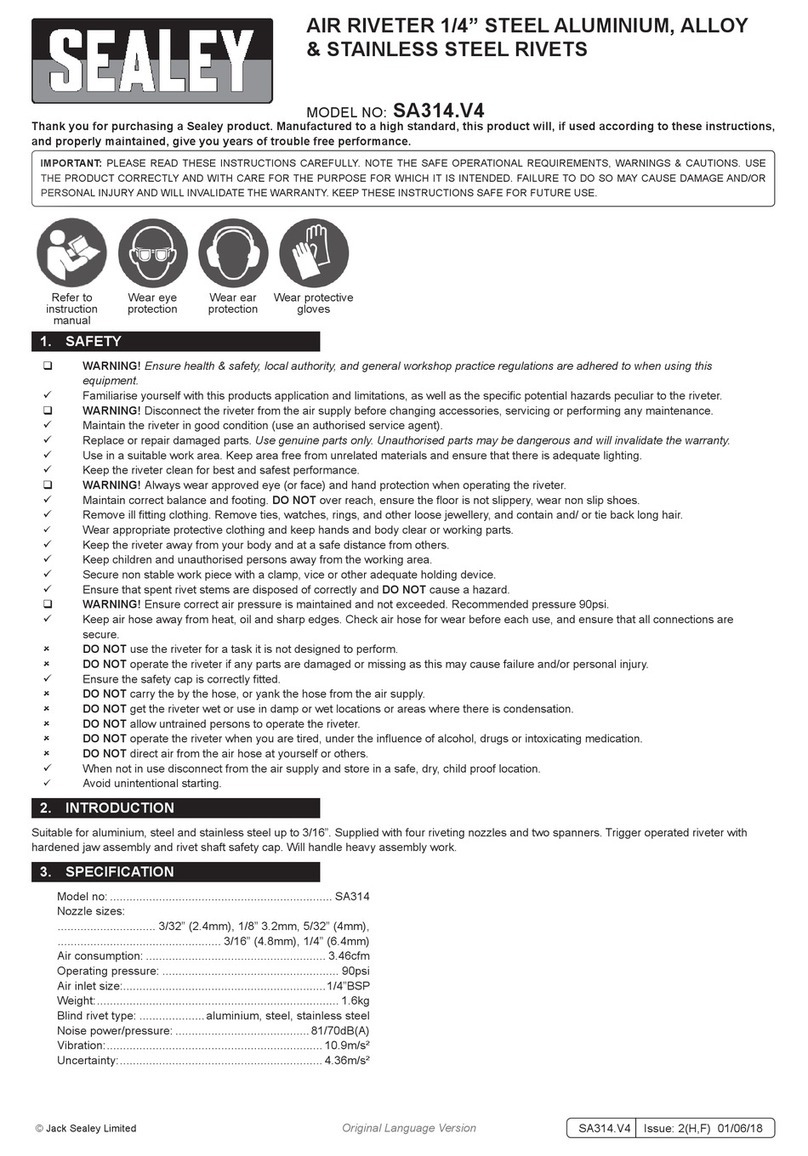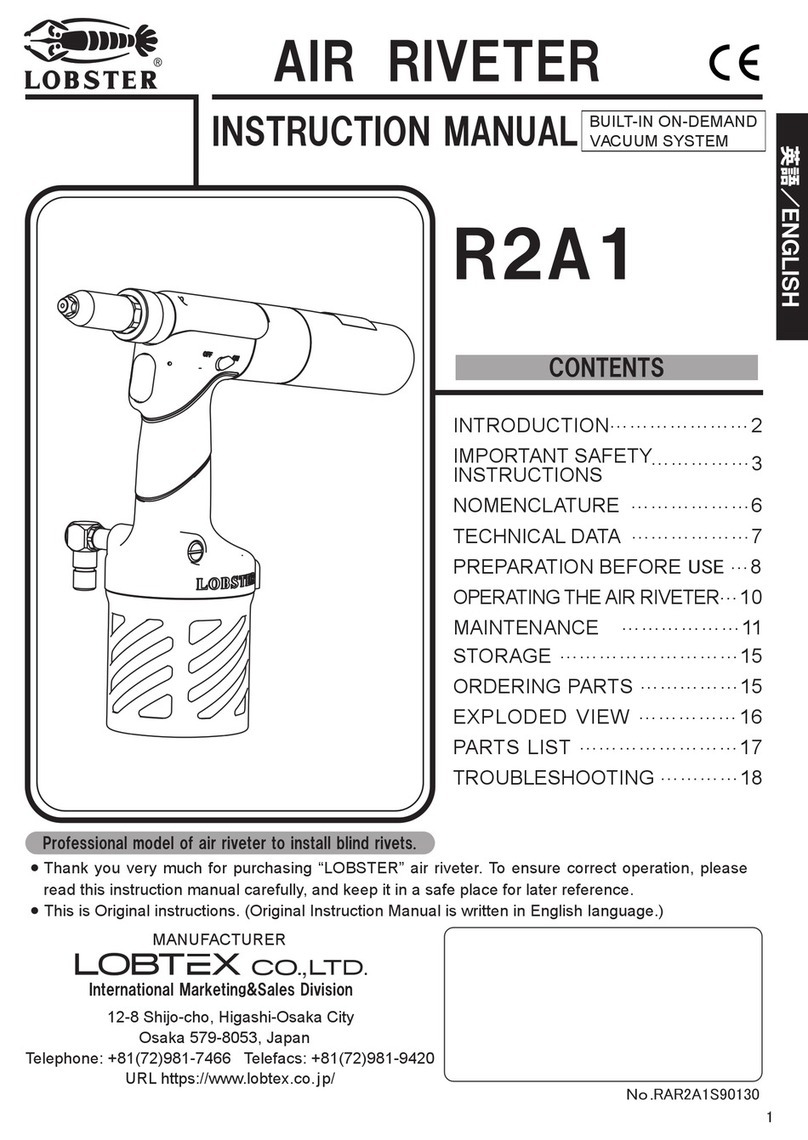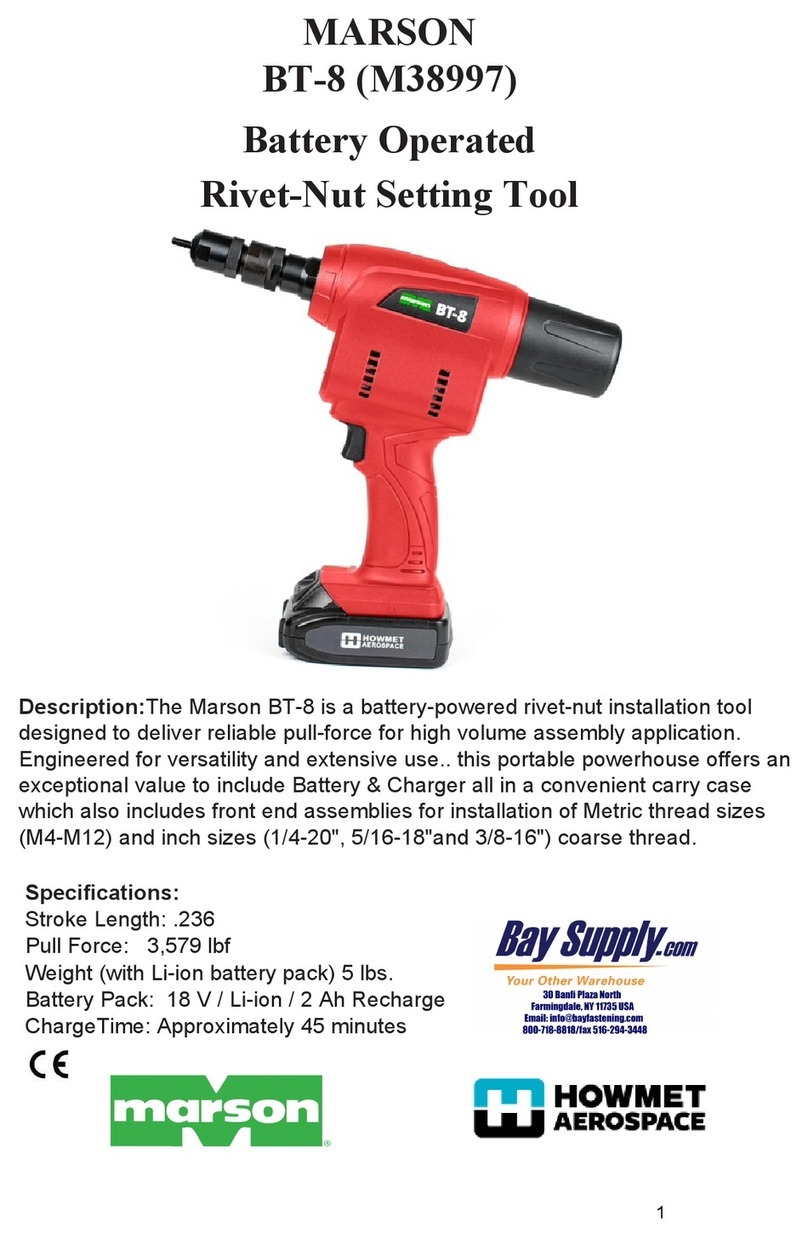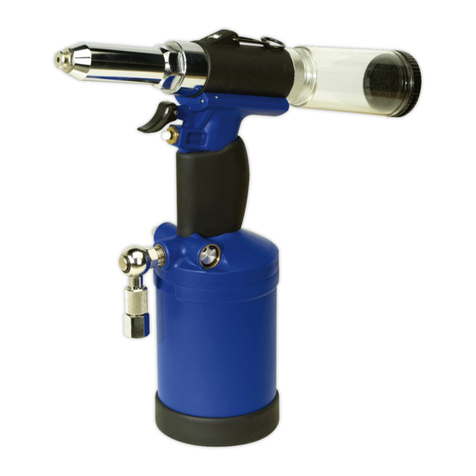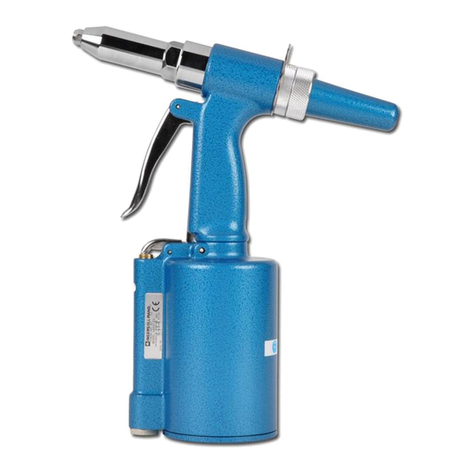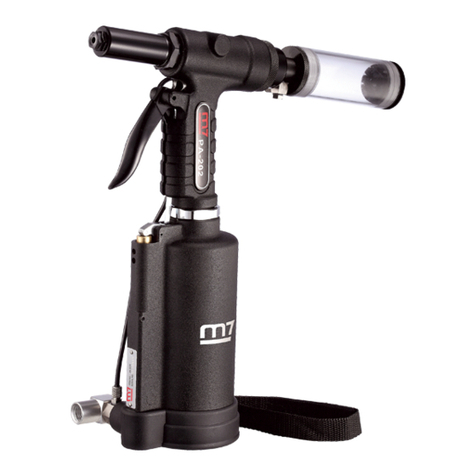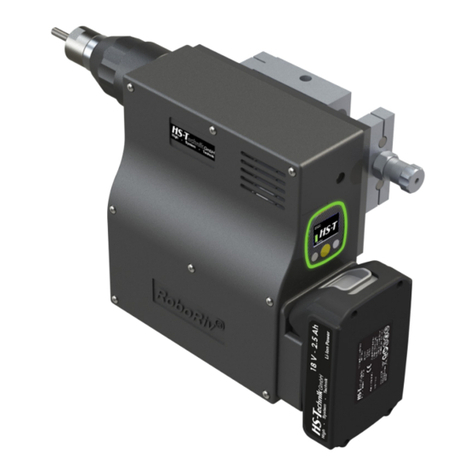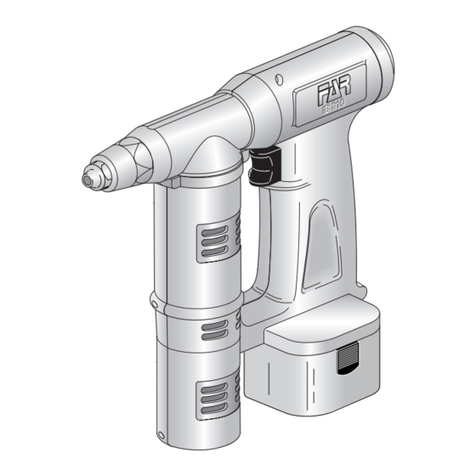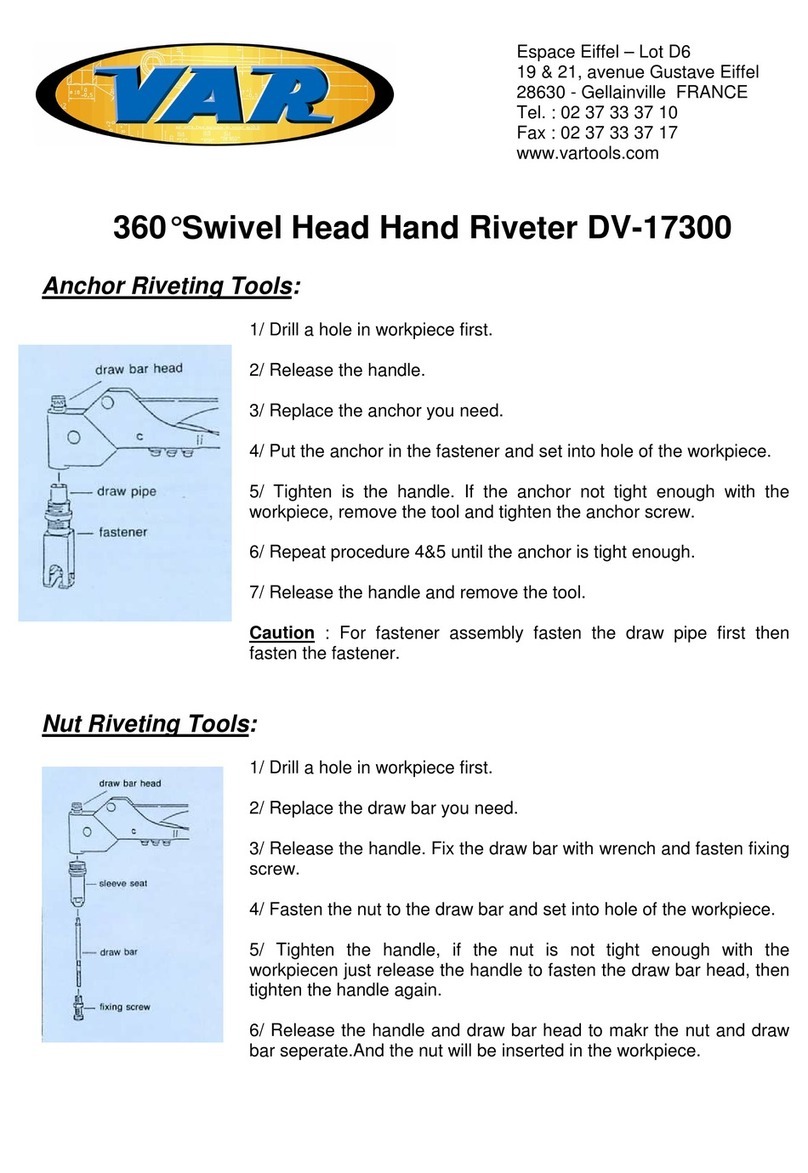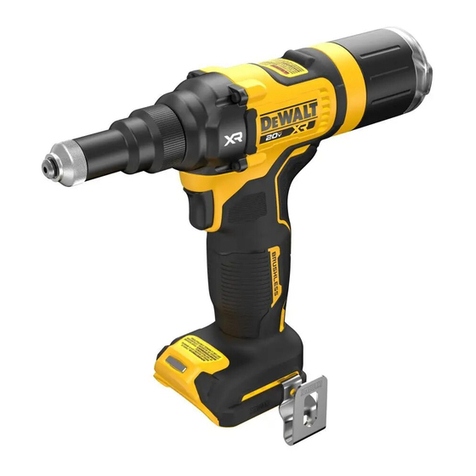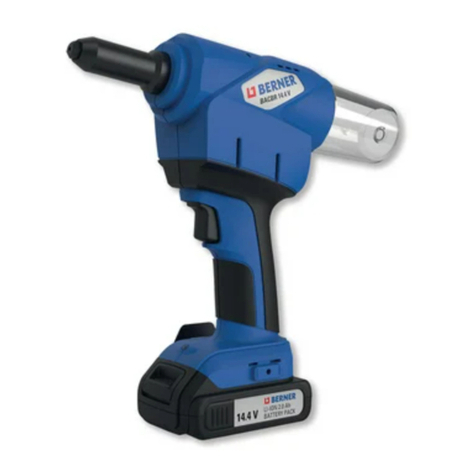GiraPow LD803L User manual

- 2 -
GENERAL POWER TOOL
SAFETY WARNINGS
!WARNING Read all safety warnings, instructions, illustrations and specifications
provided with this power tool. Failure to follow all instructions listed below may result in
electric shock, fire and/or serious injury. Save all warnings and instructions for future
reference. The term "power tool" in the warnings refers to your mains-operated (corded)
power tool or battery-operated (cordless) power tool.
WORK AREA SAFETY
•Keep work area clean and well lit. Cluttered or dark areas invite accidents.
•Do not operate power tools in explosive atmospheres, such as in the presence of
flammable liquids, gases or dust. Power tools create sparks which may ignite the dust
or fumes.
•Keep children and bystanders away while operating a power tool. Distractions can
cause you to lose control.
ELECTRICAL SAFETY
•Power tool plugs must match the outlet. Never modify the plug in any way. Do not
use any adapter plugs with earthed (grounded) power tools. Unmodified plugs and
matching outlets will reduce the risk of electric shock.
•Avoid body contact with earthed or grounded surfaces, such as pipes, radiators,
ranges, and refrigerators. There is an increased risk of electric shock if your body is
earthed or grounded.
•Do not expose power tools to rain or wet conditions. Water entering a power tool will
increase the risk of electric shock.
•Do not abuse the cord. Never use the cord for carrying, pulling or unplugging the
power tool. Keep cord away from heat, oil, sharp edges or moving parts. Damaged or
entangled cords increase the risk of electric shock.
•When operating a power tool outdoors, use an extension cord suitable for outdoor
use. Use of a cord suitable for outdoor use reduces the risk of electric shock.
•If operating a power tool in a damp location is unavoidable, use a ground fault circuit
interrupter (GFCI) protected supply. Use of a GFCI reduces the risk of electric shock.
PERSONAL SAFETY
•Stay alert, watch what you are doing and use common sense when operating a
power tool. Do not use a power tool while you are tired or under the influence of
drugs, alcohol or medication. A moment of inattention while operating power tools may
result in serious personal injury.
•Use personal protective equipment. Always wear eye protection. Protective equipment
such as a dust mask, non-skid safety shoes, hard hat or hearing protection used for
appropriate conditions will reduce personal injuries.
•Prevent unintentional starting. Ensure the switch is in the off-position before
connecting to power source and/or battery pack, picking up or carrying the tool. Carrying

- 3 -
power tools with your finger on the switch or energizing power tools that have the switch
on invites accidents.
•Remove any adjusting key or wrench before turning the power tool on. A wrench or
a key left attached to a rotating part of the power tool may result in personal injury.
•Do not overreach. Keep proper footing and balance at all times. This enables better
control of the power tool in unexpected situations.
•Dress properly. Do not wear loose clothing or jewelry. Keep your hair and clothing
away from moving parts. Loose clothes, jewelry or long hair can be caught in moving
parts.
•If devices are provided for the connection of dust extraction and collection
facilities, ensure these are connected and properly used. Use of dust collection can
reduce dust-related hazards.
•Do not let familiarity gained from frequent use of tools allow you to become
complacent and ignore tool safety principles. A careless action can cause severe
injury within a fraction of a second.
POWER TOOL USE AND CARE
•Do not force the power tool. Use the correct power tool for your application. The correct
power tool will do the job better and safer at the rate for which it was designed.
•Do not use the power tool if the switch does not turn it on and off. Any power tool
that cannot be controlled with the switch is dangerous and must be repaired.
•Disconnect the plug from the power source and/or remove the battery pack, if
detachable, from the power tool before making any adjustments, changing
accessories, or storing power tools. Such preventive safety measures reduce the risk
of starting the power tool accidentally.
•Store idle power tools out of the reach of children and do not allow persons
unfamiliar with the power tool or these instructions to operate the power tool.
Power tools are dangerous in the hands of untrained users.
•Maintain power tools and accessories. Check for misalignment or binding of
moving parts, breakage of parts and any other condition that may affect the power
tool’s operation. If damaged,
have the power tool repaired before use. Many accidents are caused by poorly maintained
power tools.
•Keep cutting tools sharp and clean. Properly maintained cutting tools with sharp
cutting edges are less likely to bind and are easier to control.
•Use the power tool, accessories, and tool bits, etc. in accordance with these
instructions, taking into account the working conditions and the work to be
performed. Use of the power tool for operations different from those intended could result
in a hazardous situation.
•Keep handles and grasping surfaces dry, clean and free from oil and grease.
Slippery handles and grasping surfaces do not allow for safe handling and control of the
tool in unexpected situations.
BATTERY TOOL USE AND CARE

- 4 -
•Recharge only with the charger specified by the manufacturer. A charger that is
suitable for one type of battery pack may create a risk of fire when used with another
battery pack.
•Use power tools only with specifically designated battery packs. Use of any other
battery packs may create a risk of injury and fire.
•When the battery pack is not in use, keep it away from other metal objects, like
paper clips, coins, keys, nails, screws or other small metal objects, that can make a
connection from one terminal to another. Shorting the battery terminals together may
cause burns or a fire.
•Under abusive conditions, liquid may be ejected from the battery; avoid contact. If
contact accidentally occurs, flush with water. If liquid contacts eyes, additionally seek
medical help. Liquid ejected from the battery may cause irritation or burns.
•Do not use a battery pack or tool that is damaged or modified. Damaged or modified
batteries may exhibit unpredictable behavior resulting in fire, explosion or risk of injury.
•Do not expose a battery pack or tool to fire or excessive temperature. Exposure to
fire or temperature above 265°F (130°C) may cause an explosion.
•Follow all charging instructions and do not charge the battery pack or tool outside
the temperature range specified in the instructions. Charging improperly or at
temperatures outside the specified range may damage the battery and increase the risk of
fire.
TIPS FOR MAINTAINING MAXIMUM BATTERY PACK LIFE
•Charge the battery pack before completely discharged. Always stop tool operation
and charge the battery pack when you notice less tool power.
• Never recharge a fully charged battery pack. Overcharging shortens the battery pack
service life.
•Charge the battery pack with room temperature at 10 °C - 40 °C (50 °F - 104 °F). Let
a hot battery pack cool down before charging it.
•Charge the battery pack if you do not use it for a long period (more than six
months).
SPECIFIC SAFETY RULES FOR RIVET TOOL
•Hold power tool by insulated gripping surfaces when performing an operation
where the fastener may contact hidden wiring. Fasteners contacting "live" wire may
make exposed metal parts of the power tool "live" and could dive the operator an electric
shock.
•Always wear eye protection, hearing protection, and protective clothing and
footwear. Wear heavy, long pants, long sleeves, boots, and gloves. Contain long hair. Do
not wear loose clothing or jewelry. Do not wear short pants, sandals, or go barefoot.
•Always use a mandrel box. Spent mandrels can be ejected from the tool, causing injury.
•!WARNING Some dust created by power sanding, sawing, grinding, drilling, and other
construction activities contains chemicals known to cause cancer, birth defects or other
reproductive harm. Some examples of these chemicals are:
•lead from lead-based paint

- 5 -
•crystalline silica from bricks and cement and other masonry products, and
•arsenic and chromium from chemically treated lumber.
Your risk from these exposures varies, depending on how often you do this type of work.
To reduce your exposure to these chemicals: work in a well-ventilated area, and work with
approved safety equipment, such as those dust masks that are specially designed to filter
out microscopic particles.
SPECIFICATIONS
Model NO: LD803L
Type: Stainless Steel Blind Rivet Tool
Volts: 18 DC
Pulls Force: 2023 lbs.
Stroke Length: 0.19”, 0.31”, 0.51”, 0.63”
Blind Rivet Sizes: 1/8", 5/32", 3/16"
Battery Pack Type: GBL18B2
Lithium Ion
Charger Type: GBL18C2
N.W. (Body Only): 2.2lb
Recommended Ambient
Operating Temperature: 0°F to 125°F
FUNCTIONAL DESCRIPTION
1Nose Piece
2Nose Housing
3LED Light
4Trigger
5Handle
6Stroke Length Reduce Button
2
9
6
8
7
1
3
4
5

- 6 -
7Stroke Length Increase Button
8Blind Rivet Size Indicator Lamps
9Battery Indicator Lamps
OPERATION
Before using the tool, follow these steps to charge the battery pack.
1. Plug the charger into a 110-volt AC power source. The charge indicator flashes green.
2. After inserting the battery pack, if the battery power is less than 80%, the red light is
always on; when the battery power exceeds 80%, the light is red and green.
3. When the charging indicator turns green, the charging cycle ends.
4. After charging, unplug the charger from the power source.
Removing/Inserting the Battery Pack
To remove the battery pack, push in the release buttons and pull the battery pack away
from the tool.
!WARNING Always remove the battery pack before changing or removing
accessories. To insert the battery, slide the pack into the body of the tool. Make
sure it latches securely into place.
!WARNING Only use accessories specifically recommended for this tool. Others
may be hazardous. Always use mandrel box. Spent mandrels can be ejected from
the tool, causing injury.
Installing the Nose Piece
The rivet tool comes with 3 nose pieces for 1/8", 5/32", and 3/16" blind rivet sizes.
1. Remove the battery pack.
2. Remove the nose piece from the nose housing by using the onboard spanner wrench
3. Select the correct nose piece for the rivet to be installed.
4. Insert the new nose piece into the nose housing. Use the onboard spanner wrench to
hand-tighten securely.
!WARNING To reduce the risk of injury, always wear safety goggles or glasses with
side shields. Always remove the battery pack before changing or removing accessories.
Only use accessories specifically recommended for this tool. Others may be hazardous.
Always hold the tool securely and anticipate a sudden reaction.
Using the Rivet Tool
1. Prepare the workpiece. If necessary, drill a pilot hole.
2. Place the blind rivet mandrel into the nose piece.
3. Insert the rivet end into the workpiece. Hold the tool securely and pull and hold the
trigger until the rivet is fully set and the motor stops.
Release the trigger. The tool will reset.
NOTE: Releasing the trigger before the rivet is fully set will cause the tool to return to its
starting position.

- 7 -
Cleaning/Lubricating
Clean and lubricate the nose of the tool after heavy use (5000 rivets) or if the tool
becomes contaminated with dust and debris.
1. Remove battery pack.
2. Remove the nose housing from the tool and the nose piece from the housing.
3. Press the spring, remove the guide (with jaws), pusher tube from the tool.
4. Clean all pieces with a dry cloth and inspect for damage.
5. Apply a small amount of lubricating oil to the pieces and reassemble. Ensure the jaws
are properly seated in the guide. Ensure the guide is properly seated in the pusher tube.
!WARNING To reduce the risk of personal injury and damage, never immerse your
tool, battery pack or charger in liquid or allow a liquid to flow inside them.
Cleaning
Clean dust and debris from vents. Keep handles clean, dry and free of oil or grease. Use
only mild soap and a damp cloth to clean, since certain cleaning agents and solvents are
harmful to plastics and other insulated parts. Some of these include gasoline, turpentine,
lacquer thinner, paint thinner, chlorinated cleaning solvents, ammonia and household
detergents containing ammonia. Never use flammable or combus- tible solvents around
tools.
CONTACT US
Email: support@girapow.com
Website: www.girapow.com
- 7 -
Cleaning/Lubricating
Clean and lubricate the nose of the tool after heavy use
(5000 rivets) or if the tool becomes contaminated with
dust and debris.
1. Remove battery pack.
2. Remove the nose housing from the tool and the nose
piece from the housing.
3. Press the spring, remove the guide (with jaws), pusher
4. tube from the tool.
4. Clean all pieces with a dry cloth and inspect for damage.
5. Apply a small amount of lubricating oil to the pieces and
reassemble. Ensure the jaws are properly seated in the guide.
Ensure the guide is properly seated in the pusher tube.
!WARNING To reduce the risk of personal injury and
damage, never immerse your tool, battery pack or charger
in liquid or allow a liquid to flow inside them.
Cleaning
Clean dust and debris from vents. Keep handles clean, dry and free of oil or grease. Use
only mild soap and a damp cloth to clean, since certain cleaning agents and solvents are
harmful to plastics and other insulated parts. Some of these include gasoline, turpentine,
lacquer thinner, paint thinner, chlorinated cleaning solvents, ammonia and household
detergents containing ammonia. Never use flammable or combus- tible solvents around
tools.
CONTACT US
Email: support@girapow.com
Website: www.girapow.com
Nose
housing
Nose
piece
Guide
Jaws
Pusher
tube
Spring
Table of contents

